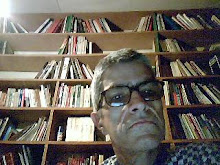The first export of Tete coal in more than two decades left Beira port on 14 September. It was 35,000 tonnes from Vale for Dubai.
But the government has suspended issuing new coal licences in Tete and is planning a new mining law, while problems remain in Beira. (Noticias 9, 16, 28, 30 September 2011).
A total of 112 coal prospecting and mining licences have been issued to 45 foreign and national companies in just the past two years, and the government wants first to check which licences are actually being used – and revoke those which are not. The three biggest companies are Vale,
Riversdale Rio Tinto, and Minas de Rivubue. Others include three Indian companies: Jindal Steel and Power Ltd (JSPL), Midwest Mozambique and Osho Gremach Mining, as well as the Russian Eurásia Natural Resources Corporation. Indian companies have been criticised, in Mozambique and elsewhere, for not using exploration licences.
Predictions are that Mozambique could export 40 million tonnes of coal per year (worth $12 bn at present prices) from Tete, and a similar amount from Niassa, where exploration has only begun(with Vale and Riversdale again playing a key role). Meanwhile Beira port, operated since 1998 by
Cornelder (part owned by the Guebuza family), does not have the capacity to handle this much coal. Cornelder marketing head Felix Machado says the current capacity is 6 million tonnes per year, through a terminal exclusively for Vale and Riversdale. Other companies which hope to start
exporting next year have made no arrangements for port facilities, although Cornelder has plans to expand the coal terminal to handle 18 million tonnes per year.
Meanwhile, 1,000 women demonstrated in front of the Beira City Council headquarters demanding just compensation for land and crops they are losing because of the construction of the new coal terminal. The women say there is inconsistent compensation for the loss of their small rice fields.
The ports and rail company (CFM) representative, Rito Almirante, said that the different payments were due to different levels of damage. Those who could never use their land again were entitled to compensation of 5,000 meticais ($187), said Almirante, whereas those who had only lost their
rice harvest, would receive 1,500 Mt ($56). (Diario de Mocambique, 18 Sept 2011)
Inspections and new law
Mining vice minister Abdul Razak Noormahomed told Noticias that the government is rushing to train mining engineers to ensure there are enough inspectors for the rapidly expanding mining sector. More than 1000 mining and prospecting licences have been issued, according to Eduardo
Alexander, national director of mining. He noted that whereas a decade ago mining investment was only $20 million per year, it is now over $1 billion per year – and will continue to increase.
Noormahomed estimates that $15 bn will be spent by 2018 on installations to produce Liquified Natural Gas (LNG) in Cabo Delgado.
And Mozambique is revising its 2002 mining law. Afonso Mabica, inspector of the minerals ministry, says that Mozambique has gained huge experience in dealing with mining companies over the past decade and that the substantial exploration has given the government a better understanding of Mozambique's massive mineral resources. Therefore, it is time for a new law.
New Chinese mine
In what appears to be the first Chinese mining concession, Africa Great Wall is to mine titanium heavy sands in Sangage, Angoche, Nampula. Minerals Minister Esperança Bias says the company will invest $30 million and pay the government $4 million a year in taxes during the 15 year life of
the mine. This will be the second large open cast heavy sands mine on the Nampula coast, and a third is planned. Kenmare currently mines in Topuito, Moma district, and Bias said there is another large reserve in Quinga, Mongicual district. (Noticias 3 Oct 2011)
And problems in Tete
The Moatize coal basin is so large and rich that all of Tete city and its surrounding area is sitting on coal, which is causing difficulties. A thick layer of coal has stopped the construction of the second bridge over the Zambezi River at Tete. The coal is only 16 metres below where one of the
foundations is to be built, and Engineer José Frutuoso said he does not think a bridge has ever been built sitting on a coal seam like this, and that experts are being brought from Europe to see what to do. The coal seam also runs under the river. The new bridge is 5 km downstream from the
old bridge and will be 715 metres long. (Noticias 21 Sept 2011) Meanwhile, the Portuguese-Mozambican company building and subsequently running the bridge will also take over the old bridge and 700 km of road in the Tete corridor linking Malawi and Zimbabswe. (Noticias 1 Oct 2011).
And the Frelimo party in Tete complained the central government is issuing coal mining licences without even telling local officials. Frelimo Tete First Secretary Xavier Sakambwera said that local officials found only from the press that permission had been granted to dig up the Tete airport to
mine coal and that the airport would be moved. "Communities and investors are in constant conflict", he said. And he complained about Vale and Riversdale being allowed to cut roads, which has forced peasants to travel 50 kilometers instead of 15 to take their produce to market. (Noticias 6 September)
MOZAMBIQUE 185
News reports & clippings
3 Oct 2011
=========
Editor: Joseph Hanlon ( j.hanlon@open.ac.uk)
Assinar:
Postar comentários (Atom)


Nenhum comentário:
Postar um comentário